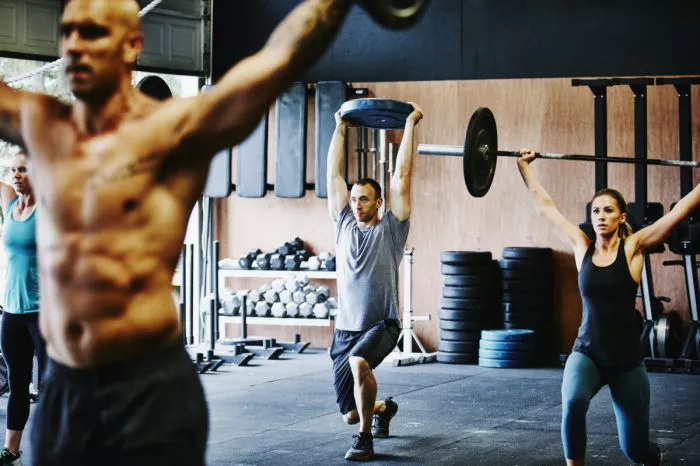Achieving a strong and toned midsection is a common fitness goal for many. For beginners, it’s crucial to start with effective and manageable ab workouts. This guide provides detailed information on the 6 best ab exercises tailored for those new to fitness.
Understanding the Core
Before diving into specific workouts, it’s important to understand the core. The core isn’t just about the abdominal muscles; it includes the pelvis, lower back, hips, and stomach muscles. A strong core improves balance and stability and supports overall physical activities.
Benefits of Ab Workouts
- Improved Posture: Strengthening the core helps maintain proper posture.
- Reduced Back Pain: A strong core can alleviate back pain.
- Enhanced Performance: Core strength boosts performance in various sports and physical activities.
- Injury Prevention: A stable core reduces the risk of injuries.
Getting Started: Tips for Beginners
- Warm-Up: Always start with a warm-up to prepare your muscles.
- Proper Form: Focus on form to prevent injuries.
- Gradual Progression: Start with basic exercises and gradually increase intensity.
- Consistency: Regular workouts are key to seeing results.
- Rest: Allow time for muscle recovery.
1. Crunches
How to Perform Crunches
- Starting Position: Lie on your back with knees bent and feet flat on the floor.
- Hand Placement: Place your hands behind your head or crossed on your chest.
- Movement: Lift your shoulders off the floor, engage your core, and hold for a second.
- Return: Slowly lower back to the starting position.
Benefits
- Targets the upper abdominal muscles.
- Simple and effective for beginners.
Tips
- Avoid pulling your neck.
- Exhale as you lift and inhale as you lower.
2. Plank
How to Perform a Plank
- Starting Position: Lie face down, then lift your body on your forearms and toes.
- Alignment: Keep your body in a straight line from head to heels.
- Hold: Maintain the position for as long as possible.
Benefits
- Engages multiple muscle groups.
- Improves overall core stability.
Tips
- Keep your back straight.
- Avoid letting your hips drop.
3. Bicycle Crunches
How to Perform Bicycle Crunches
- Starting Position: Lie on your back with hands behind your head.
- Leg Movement: Bring your knees toward your chest and lift your shoulder blades off the floor.
- Action: Alternate touching your elbows to the opposite knees in a pedaling motion.
Benefits
- Works the oblique muscles.
- Enhances coordination.
Tips
- Keep the movement controlled.
- Avoid pulling on your neck.
4. Leg Raises
How to Perform Leg Raises
- Starting Position: Lie on your back with legs straight and hands at your sides.
- Movement: Lift your legs to a 90-degree angle.
- Return: Slowly lower your legs back down without touching the floor.
Benefits
- Targets the lower abdominal muscles.
- Strengthens hip flexors.
Tips
- Keep your lower back pressed to the floor.
- Control the movement throughout.
5. Russian Twists
How to Perform Russian Twists
- Starting Position: Sit on the floor with knees bent and feet flat.
- Body Position: Lean back slightly and lift your feet off the ground.
- Action: Twist your torso to the right, then to the left, while holding a weight or medicine ball.
Benefits
- Engages the oblique muscles.
- Improves rotational strength.
Tips
- Keep your movements controlled.
- Avoid rounding your back.
6. Mountain Climbers
How to Perform Mountain Climbers
- Starting Position: Start in a plank position.
- Leg Movement: Bring one knee towards your chest, then quickly switch legs in a running motion.
Benefits
- Combines cardio with core strengthening.
- Engages multiple muscle groups.
Tips
- Maintain a steady pace.
- Keep your body in a straight line.
Creating a Beginner’s Ab Workout Routine
Sample Routine
- Warm-Up: 5-10 minutes of light cardio (e.g., walking, jogging)
- Crunches: 3 sets of 15 reps
- Plank: 3 sets of 30 seconds
- Bicycle Crunches: 3 sets of 15 reps per side
- Leg Raises: 3 sets of 10 reps
- Russian Twists: 3 sets of 15 reps per side
- Mountain Climbers: 3 sets of 30 seconds
Frequency
- Aim for 3-4 times per week.
- Allow a day of rest between sessions.
Progression
- Gradually increase reps, sets, or hold times.
- Incorporate more advanced exercises as you become stronger.
See Also: 10 Best Ab Workout Tool
Nutrition and Recovery
Healthy Eating
- Protein: Essential for muscle repair and growth.
- Carbohydrates: Provide energy for workouts.
- Fats: Important for overall health.
- Hydration: Drink plenty of water.
Rest and Recovery
- Sleep: Aim for 7-9 hours per night.
- Active Recovery: Engage in light activities on rest days.
- Stretching: Helps prevent muscle tightness and improves flexibility.
Common Mistakes to Avoid
- Skipping Warm-Up: Increases the risk of injury.
- Overtraining: Can lead to burnout and injuries.
- Poor Form: Reduces effectiveness and can cause harm.
- Ignoring Nutrition: Hinders progress and recovery.
Staying Motivated
- Set Goals: Short-term and long-term goals keep you focused.
- Track Progress: Use a journal or app to monitor improvements.
- Variety: Mix up your routine to prevent boredom.
- Support: Join a fitness community or find a workout buddy.
Conclusion
Starting an ab workout routine as a beginner can be challenging but rewarding. By understanding the core, following proper form, and gradually increasing intensity, you can achieve a strong and toned midsection. Remember to combine workouts with a healthy diet, adequate rest, and a positive mindset for the best results. Stay consistent, and you’ll see improvements over time.


